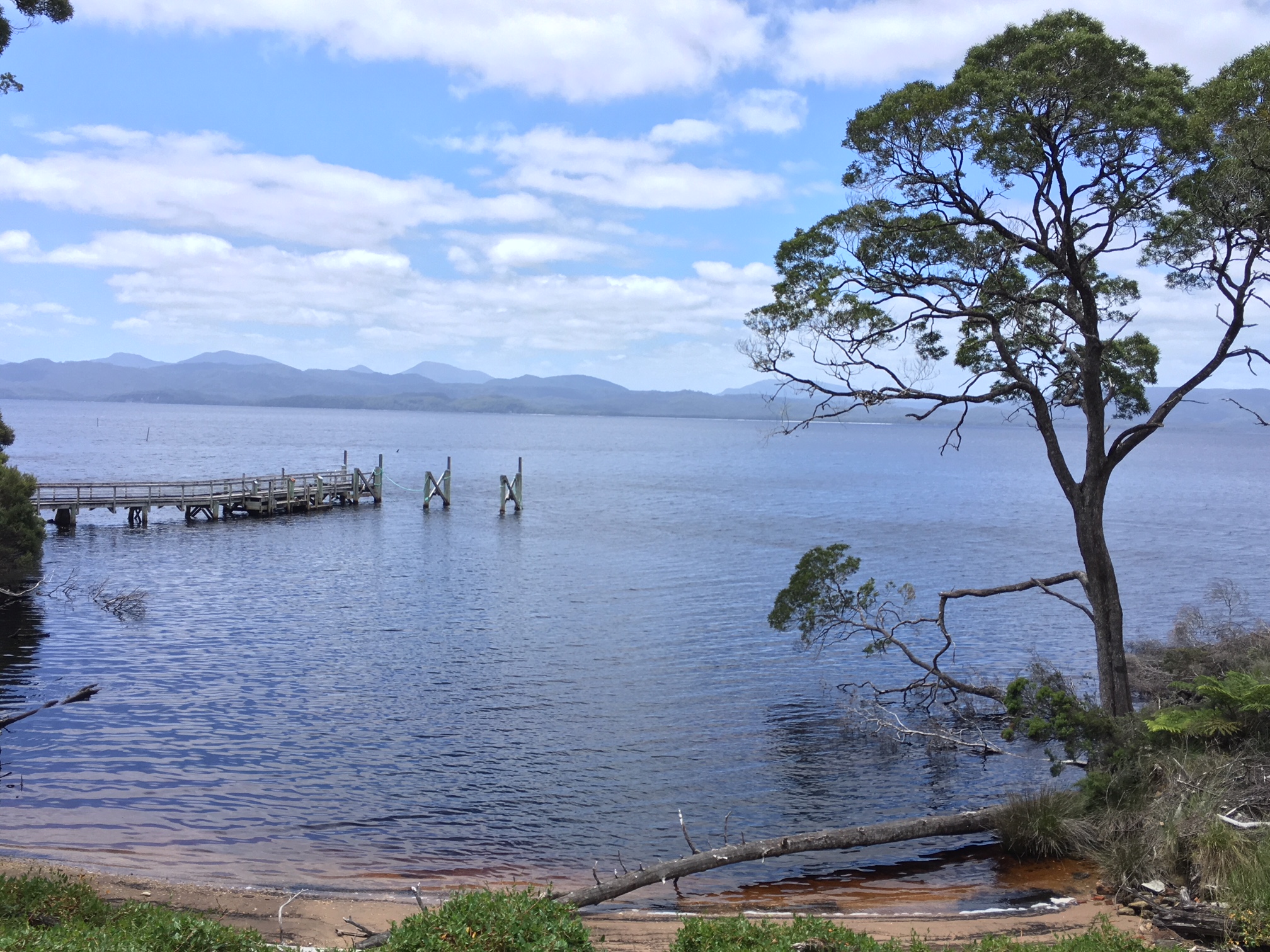There are a lot of differences between Sarah and Helena, due to time and geographical distance. But they share a bad reputation, and those that get to know them well would prefer not to. I’m not talking about sisters here, but 2 islands whose primary purpose was imprisonment.

I’ve just visited Sarah Island in Macquarie Harbour in Tasmania last week. Despite Sarah Island being a convict settlement begun in 1822, it shares so many similarities to St Helena Island, which opened 45 years later and was never a convict settlement. Both received prisoners who committed crimes in Australia, with the Sarah Island inmates classified in the ‘7th Class’ – incorrigible characters who continued to commit crimes and needed severe punishment.
The management of these prisoners is the same: exile them to an island. This management style offers many benefits, as expressed by Lieutenant- Governor Sorrell in Hobart in 1818:
-
There would be a means of employing the convicts in such a manner as to make them feel their punishment severely
-
(the) remote location would make it impossible for the convicts to escape to settled parts of the colony
-
All the work done by the convicts would in some way repay the expense of the government
It is striking how easily this applies to St Helena also. Despite both islands having vastly different environments to supply their need for self sufficiency, they both established trades utilising the resources at hand. Both used stone, lime from shells and timber from the island for day to day functioning and construction. Both created export industries that exploited the land around them – Sarah Island was a station used to transport huge Huon Pine logs to Hobart, and also to construct ships from the same timber growing abundantly in the wilderness surrounding it. St Helena Island used its volcanic soils to produce vast quantities of sugar, sweet potatoes, dairy products, livestock, hemp rope and olive oil. (poor Sarah Island only managed potatoes!)

The inmates reacted the same in both places by finding ways of escaping and received the same punishment as a consequence. On Sarah Island, John Green and Joseph Saunders both absconded on the 4th March 1822, only 8 weeks after the settlement had begun. It took Henry Irwin, Henry Morris and Richard Dawson only 6 weeks after the official opening of St Helena to escape. This story is the focus of another blog, but the punishment of flogging was the consequence of attempting to escape on both islands. That is, if Green and Saunders came back. Which they didn’t. Nor did the 6 convicts who escaped from Sarah Island 6 days after that. Nor did the 2 soldiers and 3 convicts who were sent out to find them 7 days later. The 13 men were officially “supposed to have perished in the woods,” a very inauspicious start to Sarah Island’s reputation.

In both places, a community formed despite the rugged, primitive landscape they set foot in. The people initially selected as the first settlers were chosen to achieve very specific and urgent tasks: clearing land, erecting temporary shelters and storehouses, cultivating food, providing transport and guarding the inmates. The original settlers chosen for the establishment of both islands were:
| Sarah Island, January 1822 | No. | St Helena Island, May 1867 | No. |
| Commandant and Magistrate, Lieutenant John Cuthbertson | 1 | Superintendent, John McDonald | 1 |
| Assistant Surgeon, James Spence | 1 | Visiting Surgeon | 1 |
| Harbourmaster and Pilot | 1 | Chief Warder, Charles Cassaigne, includes role of storekeeper and clerk | 1 |
| Storekeeper, Sergeant Waddie | 1 | Warders | 5 |
| Detachment, 48th Regiment | 16 | Military Guard, 50th Regiment | 9 |
| Detachment, 48th Regiment (women of) | 4 | Military Guard, 50th Regiment (Women and children of) | 0 |
| Detachment, 48th Regiment (children of) | 11 | Warders (women and children of) | 0? |
| Superintendent and Constable | 1 | Visiting Justice, William Thornton | 1 |
| Convict artificers and mechanics, to receive indulgence after a period | 11 | Foreman Carpenter, Matthew Burton
(free man) |
1 |
| Convicts not under secondary transportation, including pilot’s crew | 11 | Carpenter (free man) | 1 |
| Male convicts of incorrigible character | 44 | Male Prisoners | 60 |
| Female Convicts | 8 | Female Prisoners | 0 |
| TOTAL | 110 | TOTAL | 80 |
We will find out more about these adventurous pioneers in future blogs. And why I think that there may have been women and children on St Helena from the very beginning, although they’re very hard to find!
Sources:
Featured photo: Sarah Island, North-east view, approx 1833, William Buelow Gould
‘The Penal Settlement of Macquarie Harbour’ Hans Julen, 1976, Regal publications


Good read. Beautifully written
Thanks so much for your feedback. Sorry to be so long in replying, but I am so appreciative of your comment.
No worries 😉
Fascinating comparison Belinda. Do you know if the Sarah Islanders tried to grow other things but failed? Or did they just really like potaoes? 🙂
They did try loads of other things. Between the thumping westerly winds not allowing any fruit to ripen on the trees and vegetables and wheat unable to grown in clay and quartz soil, it was the potatoes that were the only ones to grow. No choice for the convicts there! They did conquer the issue by bringing in soil from the mainland. Gotta love a determined community!